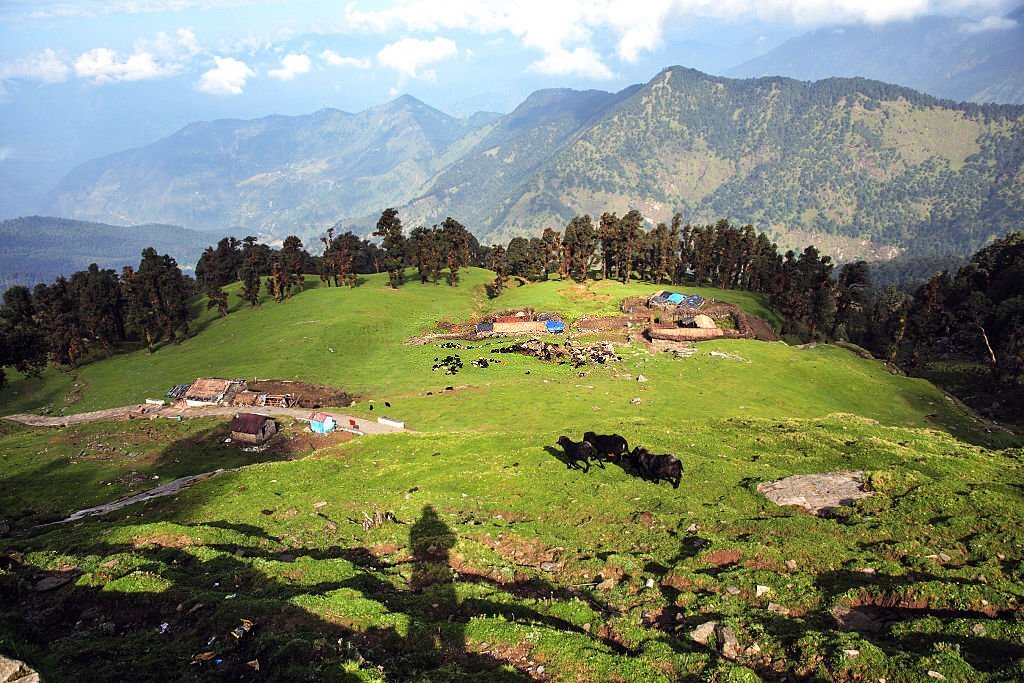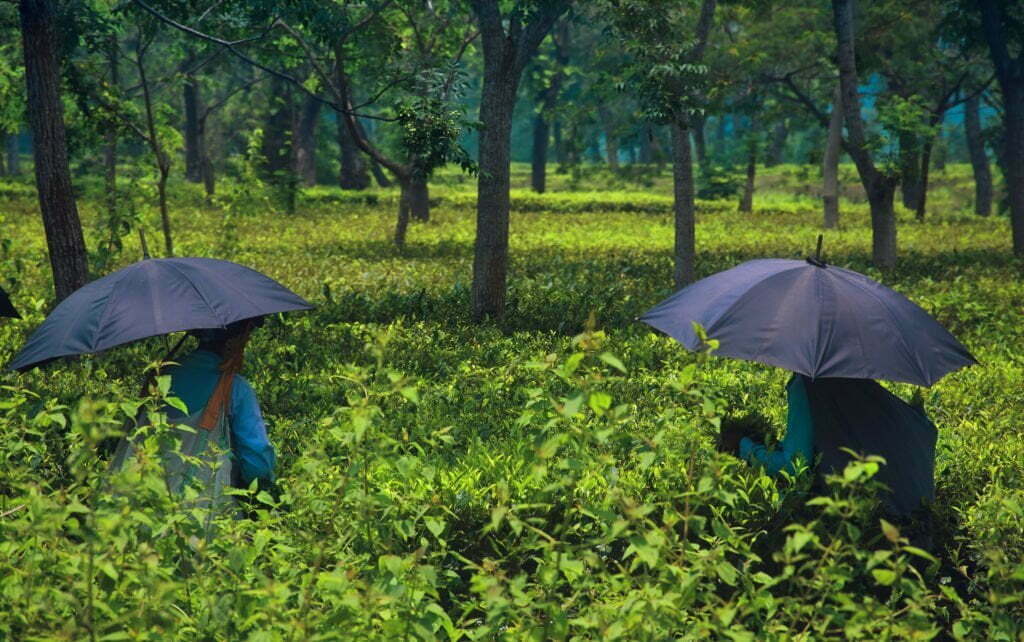Siliguri is a major city in West Bengal that forms a “twin city” with the neighboring district capital Jalpaiguri. The city is spread over the area of Darjeeling and Jalpaiguri districts in the Indian state of West Bengal. Known as the “Gateway to Northeast India”, Siliguri is popular for the three T’s – tea, timber, and tourism. It is situated in the foothills of the Himalayas on the banks of the Mahananda River and the Teesta River. Siliguri is the third largest urban agglomeration in West Bengal after Kolkata and Asansol. Siliguri is of strategic importance in West Bengal. It is conveniently located connecting four international borders namely China, Nepal, Bangladesh, and Bhutan. It also connects the Northeast with mainland India. Located in the foothills of the Eastern Himalayas, Siliguri is a significant trade and transport hub.
History
According to Sailen Debnath, “Siliguri” means a heap of pebbles or stones. The area was called “Shilchaguri” till the 19th century when the area had dense Dolka forests. Siliguri was a small agricultural village in the state of Sikkim. It was taken over by the Kingdom of Nepal in 1788, after which the Kirati and Nepali Lepchas came to settle in the region. At that time Phansidewa, a river port on the Mahananda south of Siliguri played an important role in trade links with Malda, Bengal, and Bihar. This riverine trade line was used by Bhutanese and Sikkimese to bring goods to their mainland.
Modern History
Siliguri started as a small area i.e. now Shaktigarh, the southern part of the city, on the banks of the Mahananda river. The Sugauli Treaty signed between Britain and Nepal in 1815 changed the fortunes of Siliguri. As it became the transit point with the Darjeeling Hills and the Nepalese mainland. From 1815 onwards, Siliguri began to grow rapidly as a small town due to its strategic advantages for trade. In 1865, the British occupied Darjeeling and the entire Dooars region to develop tea plantations and export the produce to England. For easy export, they started the Siliguri Town railway station which is still standing, and started a toy train in 1880 from the station to Darjeeling. This helped Siliguri to get the status of a subdivisional city in 1907. Siliguri achieved a population growth rate of 46.83% during 1981-1991. An agreement between India and China for trade through the Nathu La Pass has accelerated the development and potential of Siliguri as an international transportation and logistics hub. Later in 1994 Siliguri created a Municipal Corporation responsible for the civic infrastructure and administration of Siliguri city. Siliguri now holds the status of being the 3rd largest city in West Bengal after Kolkata.

Geography
Siliguri is located in the foothills of the Eastern Himalayas at 26.71°N 88.43°E. The city is spread over an area of 260 km2 within the Siliguri Corridor, also known as the Chicken Neck. The city is surrounded by dense forests on the north side and the lifeline of Siliguri, the Mahananda river flows through the city thereby dividing it into two parts. Also, the Teesta River is not far from the city. Siliguri has an average elevation of 122 meters (400 feet). As Siliguri is located in the Terai region, the soil is sandy in nature i.e. the ratio of sand to silt is higher than in soil. The region is prone to earthquakes due to several fault lines nearby. Siliguri Division is bounded on the north and south by the Himalayan Mountains of Bangladesh, the North Dinajpur District of West Bengal, and the Indian state of Bihar. Jalpaiguri district and Kalimpong district lie on the east and are bounded by Nepal country on the west, thus being so strategically important.
Transportation
NH 27 passes through the city center which is now a part of the AH2 project. Siliguri originates from the centuries-old hill cart road NH 110 that connects Siliguri and Darjeeling (77 km) during the British period. Also from Siliguri originates NH 10 which connects Gangtok and NH 12 which connects Pankhabari-Mirik. Highway NH 327, which connects Siliguri — Panitanki and NH 327B Panitanki-Mechi Bridge, is also part of AH2. It connects with the neighboring countries through the following routes. Sikkim Nationalized Transport Bus Terminus: Sikkim Nationalized Transport Bus Terminus (Siliguri) is located on Hilkart Road, Siliguri. This bus terminus is managed by Sikkim Government. Buses connecting the main cities and towns of Sikkim are operated from here. This bus terminus is one of the busiest and most important bus termini in the Siliguri area. Sikkim Nationalized Transport Bus Terminus (Siliguri), which connects Sikkim.

Visitor attraction
Darjeeling Himalayan Railway Toy Train runs between New Jalpaiguri, Siliguri, and Darjeeling. It was built between 1879 and 1881 and has been designated as a UNESCO World Heritage Site. Coronation Bridge, also known as Sevoke Bridge, is located under the Himalayas about 20 km from Siliguri, and was built in 1930. The bridge spans the Teesta River. Gajldoba View Point is 28 km from Siliguri, famous for the huge reservoir formed by the Teesta Barrage. The reservoir is home to various migratory birds (such as river lapwing, great crested grebe, Indian cormorant, purple heron, Eurasian weasel, common shelduck, cotton teal, tufted duck, little ringed plover, great cormorant). Due to the movement of migratory birds, the bird sanctuary is developed here. A boating facility is available. North Bengal Wild Animals Park, about 8 km (5.0 mi) from the city, offers visitors a ‘Bengal Safari’ to spot sub-Himalayan wildlife such as jungle fowl, sambar deer, royal Bengal tiger, wild boars, and spotted deer. , wild bears, and rhinos. It is basically a part of Mahananda Wildlife Sanctuary, spread over an area of 700 acres. The park conducts herbivore safaris, carnivore safaris, and elephant safaris. Mahananda Wildlife Sanctuary is located in the foothills of the Himalayas, 13 km (8.1 mi) from Siliguri. Teesta and Mahananda. The sanctuary covers 159 km2 (61 sq mi) of reserved forest. Siliguri also offers recreation and water parks for tourists and locals. Dreamland Amusement Park, located near Phulbari, 12 km (7.5 mi) from Siliguri Junction, is an agricultural land converted into a fun house. It has 5-6 normal rides including a mini ropeway. The Savin Kingdom is an amusement and water park located near Dagapur in Siliguri. The water park has a pool, slides, artificial waves, and rain dance.
